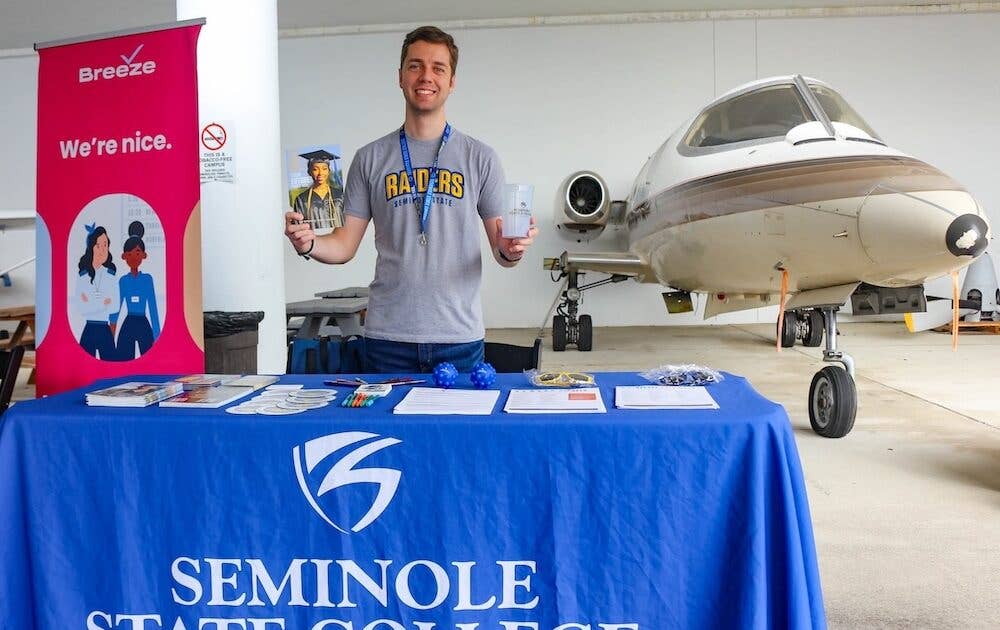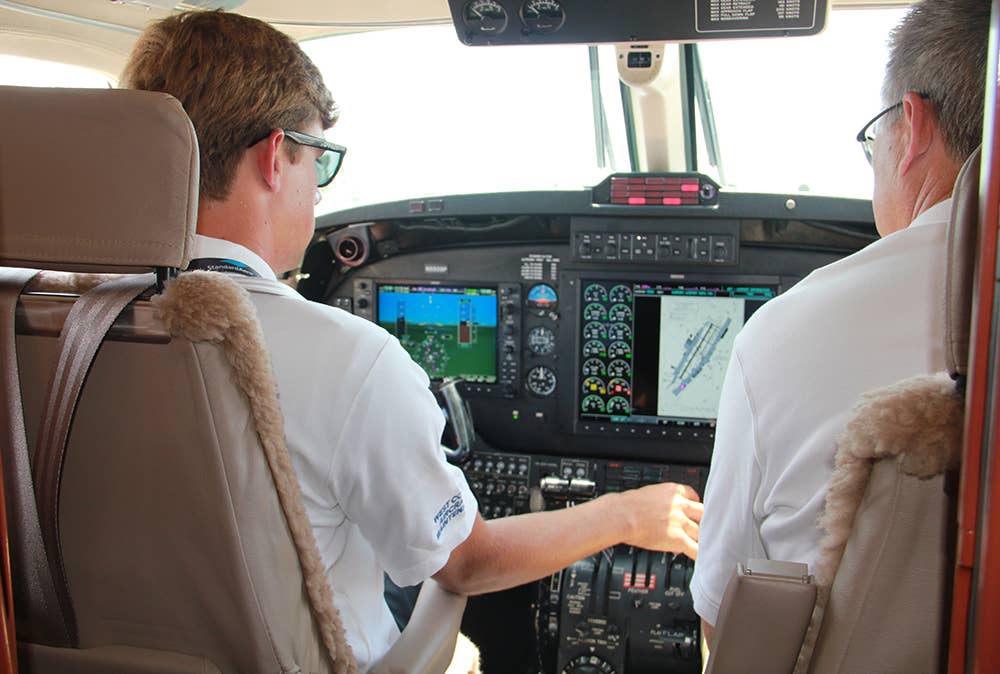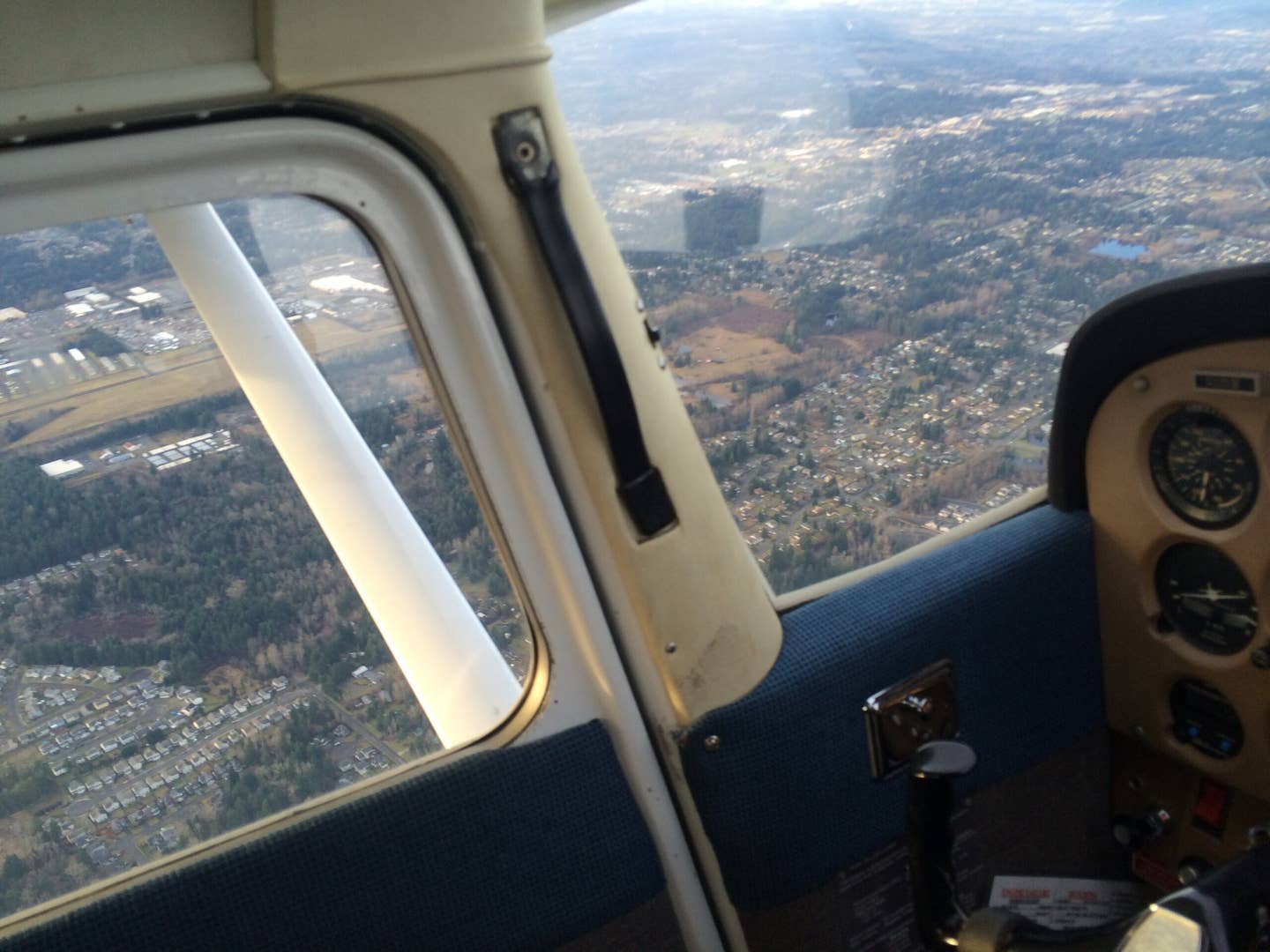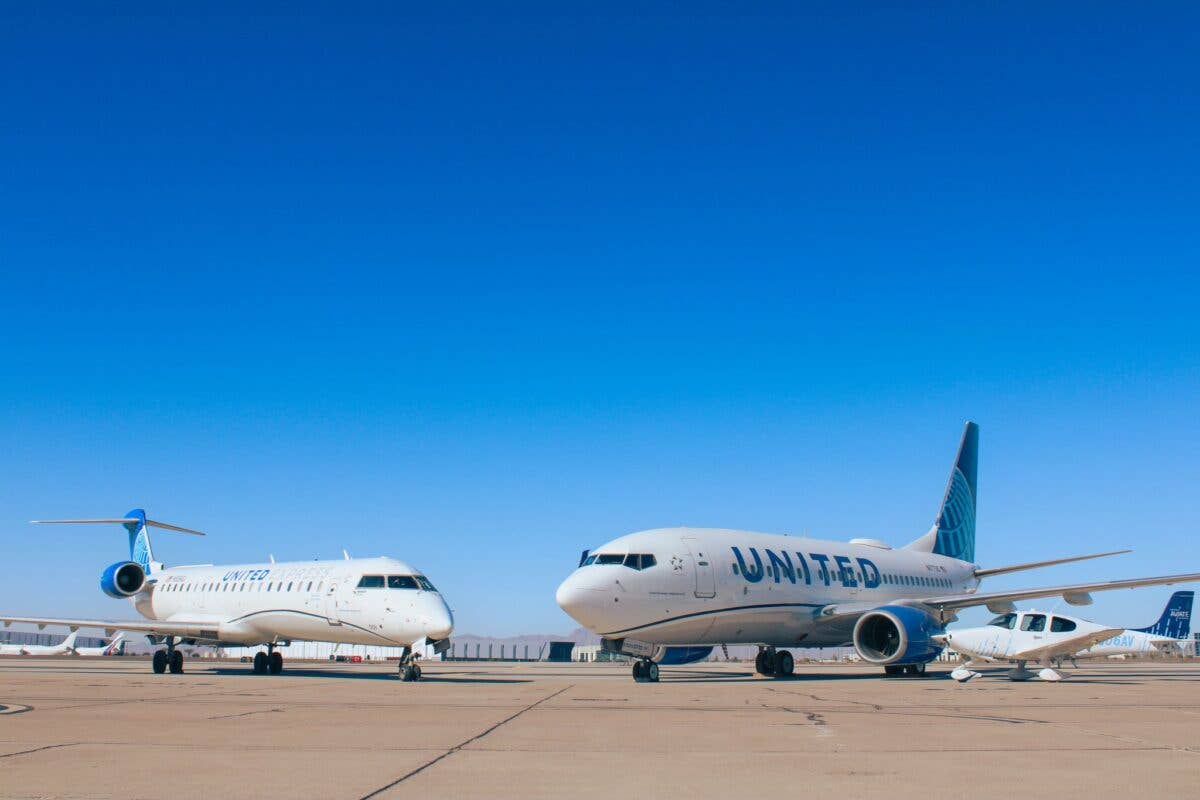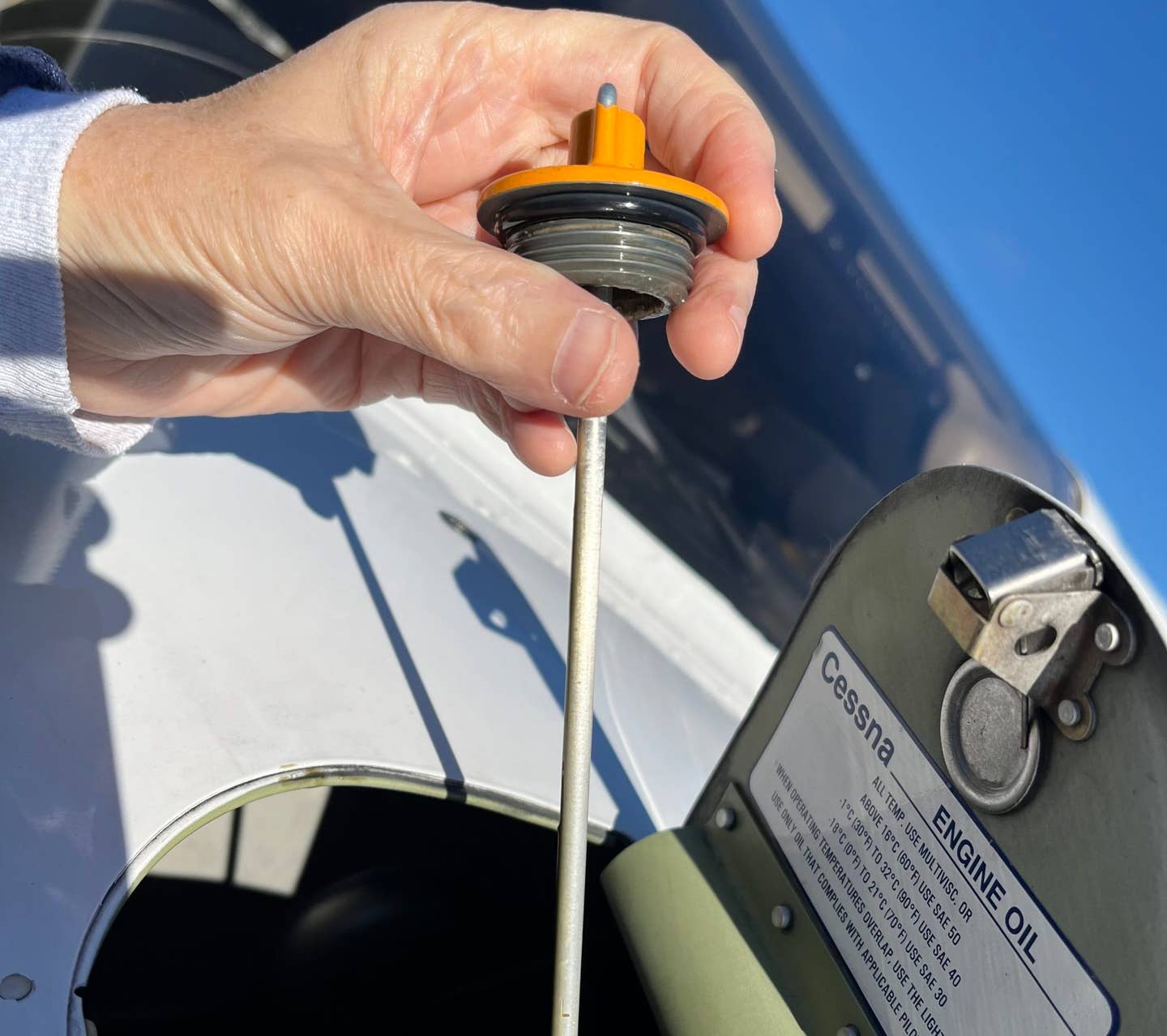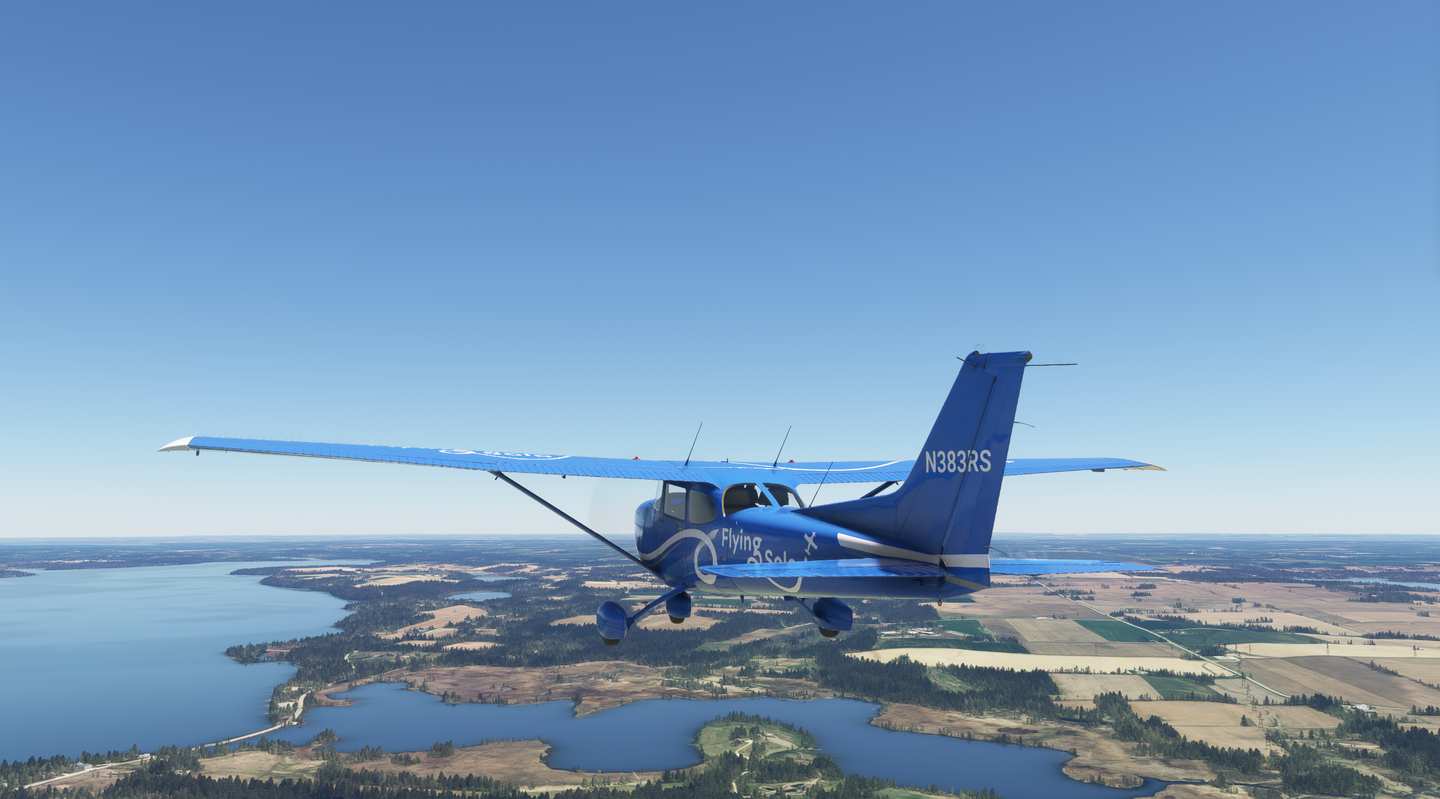
A bucket list flight simulator activity is landing at Oshkosh (KOSH) with fellow sim pilots in attempting to traverse the famous Fisk arrival at EAA AirVenture. [Microsoft Flight Simulator/Sean Siff]
It’s Sunday, July 17, 2022, exactly one week before the real-world EAA AirVenture Oshkosh, and I am at Fond Du Lac County Airport (KFLD), heading north on taxiway Alpha. Behind and ahead of me is an impressive number of general aviation aircraft, all being piloted by fellow flight sim pilots from around the world. Many of us selected KFLD as our departure point to fly the famous Fisk VFR arrival to Wittman Regional Airport (KOSH).
After starting up, calming my nerves, keying the mic, and receiving my taxi clearance, I joined the slow parade of aircraft taxiing up to the departure point of Runway 27. This looked startlingly familiar to the long lines of aircraft I’ve seen for years on the taxiways at KOSH during the real AirVenture.
If you're not already a subscriber, what are you waiting for? Subscribe today to get the issue as soon as it is released in either Print or Digital formats.
Subscribe NowFond memories returned to me of short breaks taken beside the taxiway watching aircraft, a northerly breeze keeping the summer heat in check, puffy white cumulus clouds rolling softly over the field as innumerable one-of-a-kind, rare, and well-loved GA, warbirds, antique, and homebuilt aircraft slowly roll by on their way to go flying.
Although I’m in my home flight simulator, I am excited to be trying this bucket list flight simulator activity, knowing that landing at KOSH this afternoon will be a test of concentration and flying skill as I join my fellow sim pilots in attempting to traverse the famous Fisk arrival.
Snapping out of this momentary reverie, I receive my clearance from the tower to line up and wait on Runway 27, and then:
“November 3-8-3-Romeo-Sierra, cleared for takeoff, Runway 2-7.”
- READ MORE: Earning Your Winter WINGS
Then, with as much calm in my voice as I can muster: “Roger, 383RS, cleared for take-off, runway 2-7.”
Ahead of me, another Cessna 172 is on the upwind, a safe distance ahead. On either side I can see many more GA aircraft waiting their turn to launch, propellers all spinning in anticipation. We are 12 miles due south of KOSH, but my heart rate is up, left hand on the yoke, push the throttle forward, and the takeoff roll begins. A quick glance at the oil pressure, it is in the green, and my airspeed is alive: 30, 40, 50 knots, but no faster—something’s wrong.
I can hear something is not right with the engine. But this is near impossible as I thought I had turned off major failure modes for the event. Another check of oil pressure—still green. A bit exasperated and running out of runway, I contemplate what it will feel like to botch this takeoff in front of 30 other sim pilots who are probably watching and listening on the radio.
If I don’t figure this out, I will need to abort the takeoff. I have only a few seconds to make the decision when I look across my sim cockpit and spot the culprit of the engine trouble. I leaned the mixture on the long taxi to the takeoff point, and it was still at roughly 50 percent. I jammed the mixture full forward, the engine responded, and the 172 returned to normal acceleration, up through 70 knots. I pulled back on the yoke and cleared the end of the runway to my upwind climb. Certainly an inauspicious start to the most exciting live flight sim event in which I have participated.
Having failed to double-check the mixture, I made a silent promise to myself—no more big mistakes. After all, this is the big live event of the summer for sim pilots.
With my heart rate settling back to normal and Fond Du Lac fading into the distance behind me, it was time to get ahead and stay ahead of the aircraft. One of my goals for the flight was to hand fly it, which was made easier by the calm weather programmed into the flight simulator.
I turned the heading bug on my Real Sim Gear G1000 PFD CDI and steered my 172 in a south-westerly direction over the small town of Waupun, Wisconsin. I set my altitude bug for 1,800 feet, per the arrival instructions, and trimmed to maintain the altitude.
- READ MORE: Highlights From FlightSimExpo 2024
Just like in the real world, twins and faster aircraft could opt for the 2,300-foot altitude arrival, but I purposefully chose the slower single-engine piston Cessna 172 Skyhawk, knowing that it would still provide plenty of challenge. Once I reached Waupun, I would turn the aircraft in a north-westerly direction toward the Fisk arrival Transition starting point. This would be revealed as soon as I checked the ATIS, which functioned in this SimVenture event exactly as it does in real-world flying.
There were a few important differences between the real-world EAA AirVenture Oshkosh arrival and the SimVenture version. To coordinate the same flight sim environment for all participants, pilots were asked to set their simulator weather to CAVU skies, calm winds, and standard pressure altitude of 29.92 on the barometer. This assured that all pilots were flying at the same altitude and that there were no major crosswinds, given the high density of live aircraft in the simulation.
The most interesting and compelling similarity to the real-world AirVenture experience was the fact that real Oshkosh ATC were controlling all pilots participating in SimVenture. Some of the participating controllers were even using SimVenture to warm up for the real AirVenture environment just like some pilots use simulators to fly routes in advance.
Having some of the real-life KOSH air traffic controllers join the flight simulation community to provide the ultimate full-immersion experience made it a can’t-miss event. Working from their own homes, the controllers were provided with software and access so they could see the activity on their screens and control the sim participants effectively. As soon as I tuned into the ATIS to learn which Fisk arrival transition was in use, I recognized the familiar voice, having watched numerous real-world arrivals on YouTube as part of my preparation.
PilotEdge delivers the integration of the live ATC service with participating sim pilots connecting to the event through their software client. For SimVenture, PilotEdge designated one of the four runways at KOSH for each day, providing incentive for sim pilots to fly the Fisk arrival all four days of the event. For those pilots wishing to be surprised, the runway information can be picked up when listening to ATIS or from the announcements of the approach controllers. Trying to preserve that element of surprise and realism, I briefed all four runways as part of my prep work and felt reasonably prepared for each.
I experienced some trepidation about how much of the critical scenery I would be able to see out my left window, even at 1,800 feet. Spotting the railroad tracks at Ripon, for example, and picking up Fisk Avenue over the town of Fisk were both critical details. So, a few days before SimVenture, I took a practice flight on my sim from Ripon to Fisk, trying the Fisk Avenue transition first, and then looping back to try the railroad track transition over the gravel pit second.
My justification for this practice flight was simply that I would use my home simulator to do the same thing if I was flying the arrival in real life, so why not get a quick familiarization ahead of the big event? Also, I knew how task-saturated I would feel on the day of SimVenture, and I wanted to ease that a bit.
I was 10 miles south of the start of the Fisk arrival now and dialed in the SimVenture ATIS, confirming that Puckaway Lake was the selected transition starting point and that Runway 27 was the active arrival runway for the day at KOSH. I then tuned to the Fisk Approach frequency and started to listen to the controller providing a series of directions to aircraft far ahead at the RIPON checkpoint. For now, I turned my attention to the aircraft forming up over the lake. Whatever aircraft I could form up with would become the loose formation that would make the run up the railroad tracks to the town of Fisk, and then on to landing at KOSH.
When I arrived over Puckaway Lake, the informal formation of aircraft had the organizational qualities of what I remember my middle school dances looking like— a few parts of chaos and a lot of improvisational choreography as we danced with two left feet—trying to find an aircraft of similar size and speed to fly with. It was a group assembly en masse, like a murmuration of starlings but with much more function and a lot less beauty.
Aircraft of all varieties were moving generally eastward but at a wide range of altitudes and speeds. I counted no fewer than 30 aircraft and did my best to join a small group near the southern edge of the lake. There was a concerted effort among us to order ourselves, with some jockeying for position. I slowed down to 82 knots momentarily to set myself in the back of the flying-V formation that was beginning to take shape. It wasn’t pretty, but we were Oshkosh-bound.
The next transition point ahead of us was Green Lake. Per the notice, we had until the town of Ripon to form a single file line, and this had to be completed without talking to each other on the radio. All of us were doing our best to balance the many simultaneous tasks of navigating visually, watching out for nearby traffic, holding altitude and airspeed, and listening to the controllers. The leg from Green Lake to RIPON isn’t more than 10 miles, so there wasn’t much time to make it all work. It was odd to be so close to other aircraft but with no direct way to communicate with them. The flying-V shape was holding on the right side, but there was a bevy of aircraft that still needed to sort themselves into order off to my left.
Farther ahead, the radio was alive with the Fisk Approach controller turning around a group of sim pilots that couldn’t get themselves into a single file. They were receiving the “turn back” instructions, which meant the whole group had to enter a left turn counterclockwise and fly over the northern shore of Green Lake, then fly nearly 20 miles back to the transition point on Puckaway Lake and try the entire process again. In my group, we had 6 miles to go until RIPON and we still had some work to do.
I used the hat switch on my yoke to move the camera view to my left and right so that I could read our position and progress towards single-file-ness. Satisfied with my relative position to the other aircraft, I clicked the button to return my camera view to straight ahead out my windscreen, and without warning, another single-engine piston aircraft flew directly in front of me from the left, giving me cause to wonder if I would feel the prop wash in sim.
If it had been real life, it would have been a nerve-wracking close call, and I suspect that I could have seen the other pilot’s eye color. I immediately corrected more to the right and tried to slow down by a few knots, wanting to avoid the accordion effect of stacking up the sim pilots behind me. Not an ideal situation, but one I probably should have been expecting given all of the traffic. By now, the frequency was alive with activity from the Fisk Approach controllers, who were exercising equal parts patience and directness.
Soon we were on the doorstep of the RIPON transition, and I began looking for the railroad tracks that would lead us to Fisk. I was confident that I could see the tracks from 1,800 feet, having run the practice flight a few days before. I was glad I had done so since Route 44 runs closely alongside and can be visually mistaken in the sim environment if glanced at casually.
Our informal gaggle of aircraft formed a decent single-file line of four, and we made it to RIPON without getting sent back to the end of the line. The others in our group had pressed ahead, probably at faster than 90 knots. No matter. I double-checked my altitude, airspeed, engine instruments, fuel remaining, and that I was still tracking correctly over the railroad just out of my left window.
This feature first appeared in the July/August Issue 949 of the FLYING print edition.

Sign-up for newsletters & special offers!
Get the latest FLYING stories & special offers delivered directly to your inbox


